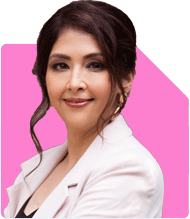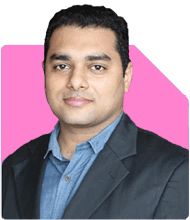38-Year-Old Looking to Retire at 45: Can My Finances Support My Dreams?
Ramalingam Kalirajan |10881 Answers |Ask -Follow
Mutual Funds, Financial Planning Expert - Answered on Nov 21, 2024
He has an MBA in finance from the University of Madras and is a certified financial planner.
He is the director and chief financial planner at Holistic Investment, a Chennai-based firm that offers financial planning and wealth management advice.... more

I am 38 years old and i wanted to take the retirement at the age of 45. I need to understand whether i have enough money to handle my monthly expenses after retirement. These are the details of my Assests :- a) Flat - 03 Cr. b) Flat where i am staying - 2.5 Cr. c) Working space - 40 Lakhs d) Ancestral Home - 2 Cr. e) Shop - 30 Lakhs f) FD - 50 Lakhs g) PF - 32 Lakhs h) MF = 10 Lakhs Expenses a) Health Insurance - 20Lakh (Premium around 35,000/year ) b) LIC Premium - 78,000 / Year (running for last 08 years) c) Monthly expenditure – maintenance , grocery , petrol , car insurance etc , school fees = 85,000 INR d) Monthly Electricity Bill , water , etc = 12000 INR e) Unforeseen expenditure = 10000 INR /Month h) SIP = 65,000 Per Month I) Foreign Trip – 02 times a year = 4.5 Lakhs Overall Expenses/Monthly = 35000+78000+85000*12+12000*12+10000*12+65000*12+450000 = 2,627,000 = 218,000 /Month Current Monthly Salary -03 Lakhs/month Keeping in mind that I need at least 70-80 Lakh for my daughter higher studies . Seeing the inflation of 7% -- Shall I ok to take the retirement at 45 and pursue my dream . If yes then please suggest whether i can sustain for my remaining life .
Key Highlights of Your Assets and Liabilities
Real Estate Portfolio:
Two flats (Rs 3 Cr + Rs 2.5 Cr = Rs 5.5 Cr).
Working space: Rs 40 Lakhs.
Ancestral home: Rs 2 Cr.
Shop: Rs 30 Lakhs.
Total Real Estate Value: Rs 8.2 Cr.
Financial Assets:
Fixed Deposit (FD): Rs 50 Lakhs.
Provident Fund (PF): Rs 32 Lakhs.
Mutual Funds (MF): Rs 10 Lakhs.
Total Financial Assets: Rs 92 Lakhs.
Breakdown of Your Expenses
Annual Fixed Costs:
Health Insurance Premium: Rs 35,000.
LIC Premium: Rs 78,000.
Monthly Expenditures (groceries, utilities, etc.): Rs 1,07,000 x 12 = Rs 12,84,000.
SIP Contributions: Rs 65,000 x 12 = Rs 7,80,000.
Foreign Trips: Rs 4.5 Lakhs.
Total Annual Expenses: Rs 26,27,000.
Monthly Equivalent: Approximately Rs 2.18 Lakhs.
Future Commitments
Daughter’s Education: Rs 70-80 Lakhs (10-12 years away).
Inflation Impact: Annual expenses will grow at 7%.
Longevity Considerations: Plan for at least 40 years post-retirement.
Evaluation of Current Wealth vs Retirement Needs
Sustainability of Expenses:
Post-retirement, monthly expenses of Rs 2.18 Lakhs will rise significantly due to inflation. At 7%, expenses may double every 10 years.
Income from Assets:
Real estate offers limited liquidity unless sold or rented out.
FD, PF, and MF will serve as primary sources of income.
Relying only on Rs 92 Lakhs of liquid assets may not be sustainable for 40 years.
Suggestions for Financial Alignment
1. Liquidity Planning
Convert some real estate into liquid assets.
Sell non-productive properties like the shop or working space.
Invest proceeds in actively managed mutual funds for better inflation-adjusted growth.
2. Expense Management
Evaluate reducing foreign trips to once a year post-retirement.
Assess if LIC policies are yielding good returns. If not, surrender and redirect funds to mutual funds.
3. Investments for Inflation-Adjusted Growth
Increase investments in mutual funds.
Consider balanced and hybrid funds to balance growth and stability.
Allocate funds in a diversified manner across equity, debt, and international mutual funds.
4. Contingency and Health Coverage
Maintain an emergency fund equivalent to 12 months' expenses.
Review health insurance coverage to ensure it meets future medical needs.
5. Daughter’s Education Fund
Set up a dedicated portfolio with Rs 50-60 Lakhs for her education.
Invest in diversified equity mutual funds to achieve the target in 10-12 years.
Can You Retire at 45?
With your current savings and lifestyle, early retirement is challenging unless you:
Monetise part of your real estate portfolio.
Reduce discretionary expenses like frequent foreign trips.
Invest aggressively for inflation-adjusted returns.
Ensure a retirement corpus of at least Rs 8-10 Crores by 45.
What to Do Next?
Consult a Certified Financial Planner to design a personalised strategy.
Use a systematic withdrawal plan (SWP) post-retirement for regular income.
Periodically review investments to ensure they are aligned with inflation and market dynamics.
Final Insights
Early retirement requires careful planning, disciplined investing, and realistic expense management. Your current assets are a strong foundation, but adjustments are needed for long-term sustainability. With proper strategy and prudent financial decisions, you can achieve your dream of retiring at 45.
Best Regards,
K. Ramalingam, MBA, CFP,
Chief Financial Planner,
www.holisticinvestment.in
www.holisticinvestment.in
https://www.youtube.com/@HolisticInvestment
You may like to see similar questions and answers below
Ramalingam Kalirajan |10881 Answers |Ask -Follow
Mutual Funds, Financial Planning Expert - Answered on Aug 02, 2025
Ramalingam Kalirajan |10881 Answers |Ask -Follow
Mutual Funds, Financial Planning Expert - Answered on Jul 30, 2025
Ramalingam Kalirajan |10881 Answers |Ask -Follow
Mutual Funds, Financial Planning Expert - Answered on Sep 13, 2025
Mayank Chandel |2575 Answers |Ask -Follow
IIT-JEE, NEET-UG, SAT, CLAT, CA, CS Exam Expert - Answered on Dec 13, 2025
Radheshyam Zanwar |6742 Answers |Ask -Follow
MHT-CET, IIT-JEE, NEET-UG Expert - Answered on Dec 13, 2025
Mayank Chandel |2575 Answers |Ask -Follow
IIT-JEE, NEET-UG, SAT, CLAT, CA, CS Exam Expert - Answered on Dec 13, 2025
Mayank Chandel |2575 Answers |Ask -Follow
IIT-JEE, NEET-UG, SAT, CLAT, CA, CS Exam Expert - Answered on Dec 13, 2025
Kanchan Rai |646 Answers |Ask -Follow
Relationships Expert, Mind Coach - Answered on Dec 12, 2025
Ravi Mittal |677 Answers |Ask -Follow
Dating, Relationships Expert - Answered on Dec 12, 2025
Ramalingam Kalirajan |10881 Answers |Ask -Follow
Mutual Funds, Financial Planning Expert - Answered on Dec 12, 2025
Ramalingam Kalirajan |10881 Answers |Ask -Follow
Mutual Funds, Financial Planning Expert - Answered on Dec 12, 2025
Reetika Sharma |423 Answers |Ask -Follow
Financial Planner, MF and Insurance Expert - Answered on Dec 12, 2025
Reetika Sharma |423 Answers |Ask -Follow
Financial Planner, MF and Insurance Expert - Answered on Dec 12, 2025























